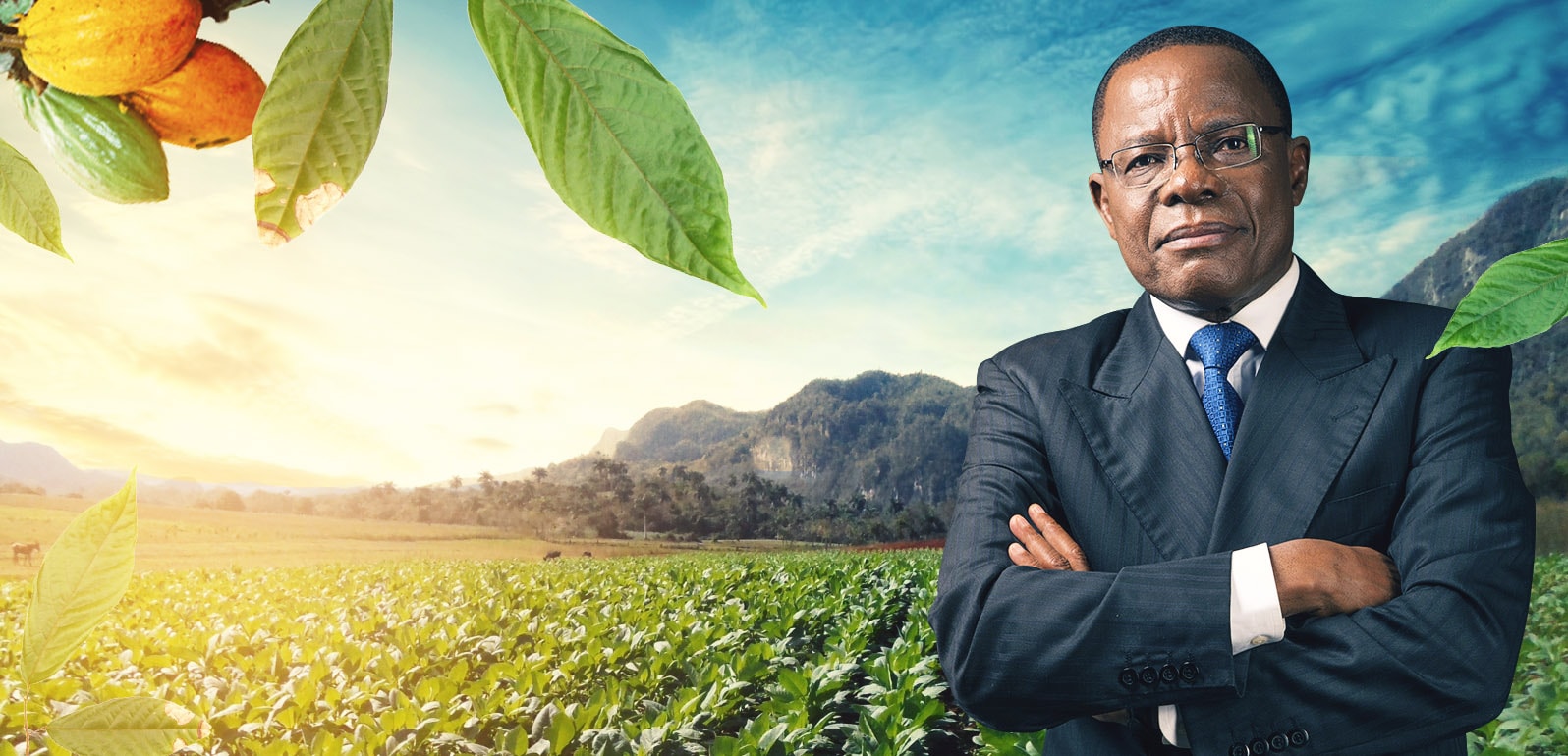Radically transforming our agriculture
Despite the gradual decline in its relative importance since independence, the agricultural sector is of paramount
importance for the Cameroonian economy. It employs around 53.2% of the labour force and has contributed around 21.3% of the country’s gross domestic product between 2010 and 2014 for around 40% of total non-oil export earnings.
Despite this acknowledged importance, the performance of the agricultural and rural sector has remained below expectations due to the fragility of food security and self-sufficiency, insufficient coverage of food demand, persistence and aggravation of poverty in rural areas, under such constraints as (i) the low production and productivity of farms, (ii) the difficulties of access to markets, (iii) the precarious living conditions in rural areas (iv) the weak organisation of the actors, (iv) the deteriorating natural environment, (vi) the inadequately adapted institutional environment and (vii) the insufficiency of funding.
However, Cameroon has all the ingredients to become one of the first African producers and not only of
Central Africa.
Our main quantitative production objectives are:
- Increase cocoa production from about 200,000 tons to 700,000 tons in 2025;
- Increase coffee production from about 40,000 tons to 100,000 tons in 2025;
- increase maize production from about 2,150,000 tons to 5,000,000 tons in 2025;
- Increase rice production from about 150,000 tons to 500,000 tons in 2025;
- Increase production of millet / sorghum from around 1,200,000 tons to 2,500,000 tons in 2025;
- Increase the production of palm oil from about 400,000 tons to 800,000 tons in 2025;
- Increase cotton production from about 250,000 tons to 350,000 tons by 2025;
- Increase the production of cashew nuts from about 33 tons to 50,000 tons in 2025;
- Increase cassava production from about 4,000,000 tons to 10,000,000 tons in 2025;
- Increase soybean production from about 15,000 tons to 50,000 tons in 2025;
- Increase tomato production from around 1,000,000 tons to 5,000,000 tons in 2025
- Increase onion production from about 70,000 tons to 150,000 tons in 2025;
- Increase plantain production from about 3,500,000 tons to 6,000,000 tons in 2025.
Secure access to land ownership
Cameroon’s new land policy, embodied in the land-use plan, will very precisely define the rules of access to land
ownership to further guarantee a rational use that takes into account the imperatives of defence or the economic options of the nation.
Securing access to land ownership should allow us to increase not only the number of farmers, large and small, but
also the total area cultivated.
A large farm coupled with a network of small farms
- We will encourage the creation of large farms of at least 100 ha with around them a network of small farms. The large farm will have storage warehouses, small processing units. It will be the privileged client of small farms.
- We will encourage small farmers to join together as a cooperative and take a stake in larger farms.
- We will promote the mechanisation of large farms as well as small ones in order to reduce the difficulty of farmers’ work for the purpose of increasing yields.
- We will encourage local production of machinery for small mechanisation.
- We will use our universities, research centres and industries to develop agricultural equipment that is adapted to the needs and resources of small farmers.
- We will support small mechanisation by granting credit to cooperatives via banks with a guarantee from the State.
- We will bring small farmers to pool their resources to acquire these small machines and use them collectively.
- We will encourage the assembly and manufacture in Cameroon of machinery that will be used for the great mechanisation essential for large farms.
Agricultural inputs permanently available
- We will facilitate access to production factors to improve productivity, including through the creation of a national seed, the creation of production structures and/or supply of fertilizers and phytosanitary products at reasonable prices, the development of natural fertilizers.
- We will put in place a real weather forecast system to help our farmers plan their production efficiently. This
weather system will be available on the Internet and will also be available for free on mobile phones. - We will use water from the Sanaga and other water courses in the country to irrigate farms along their basins
for more sustained agriculture






